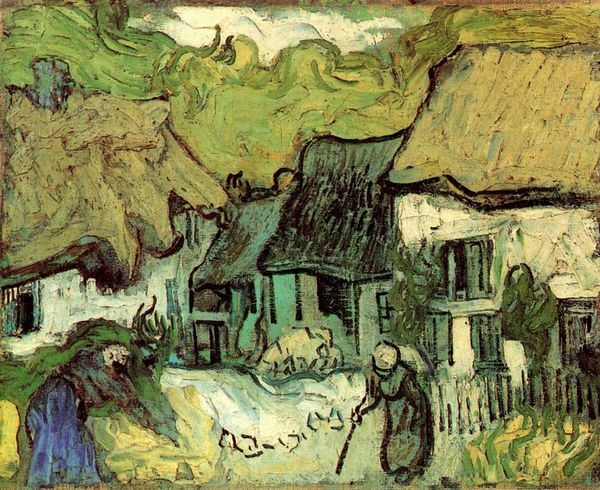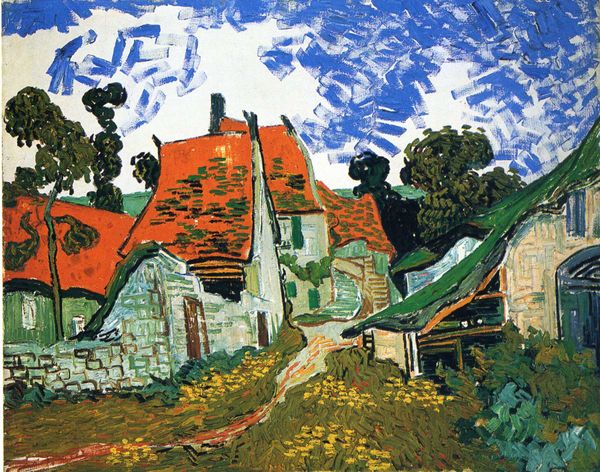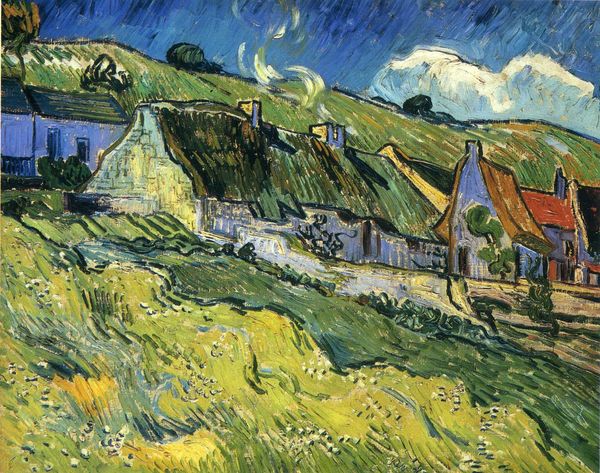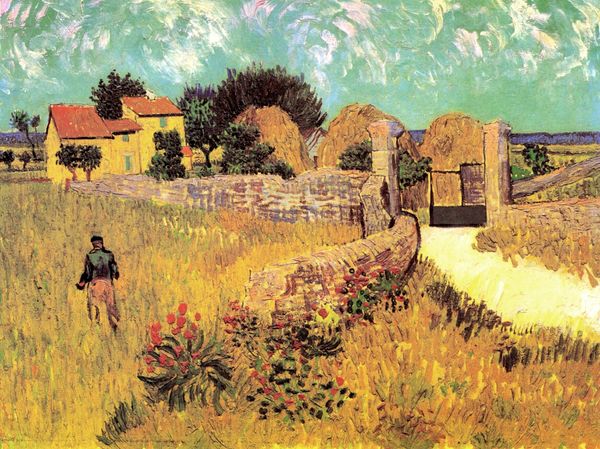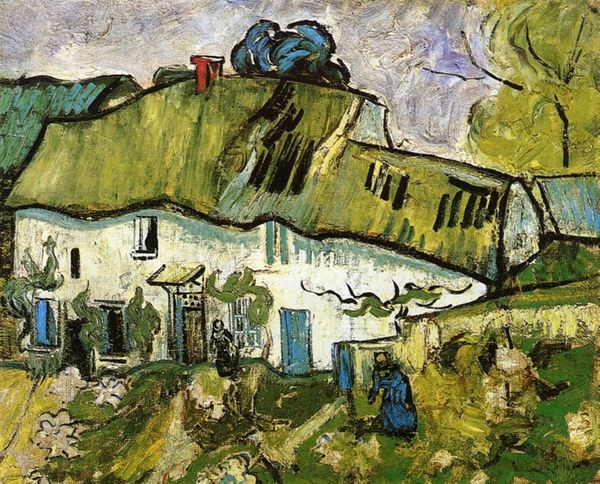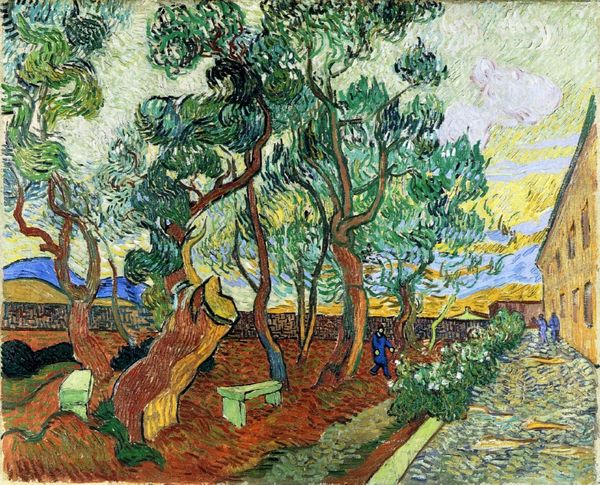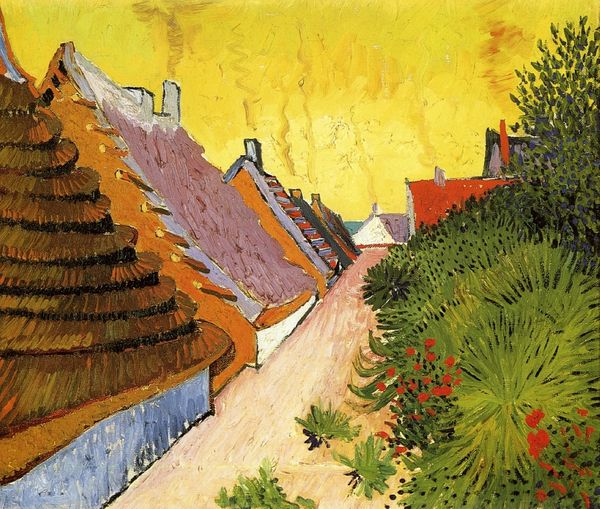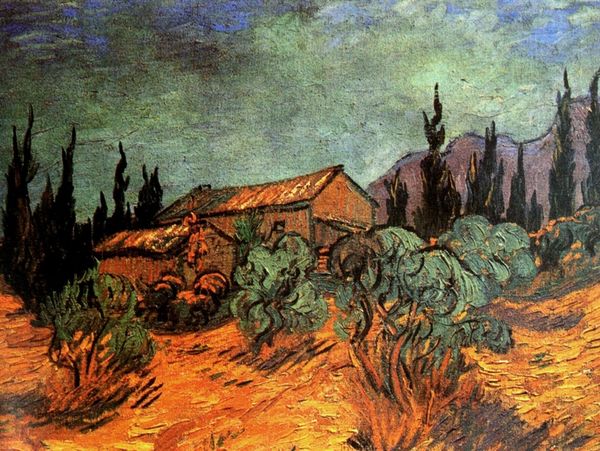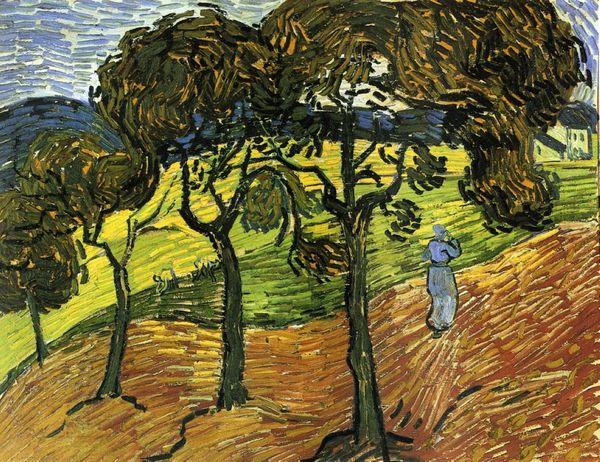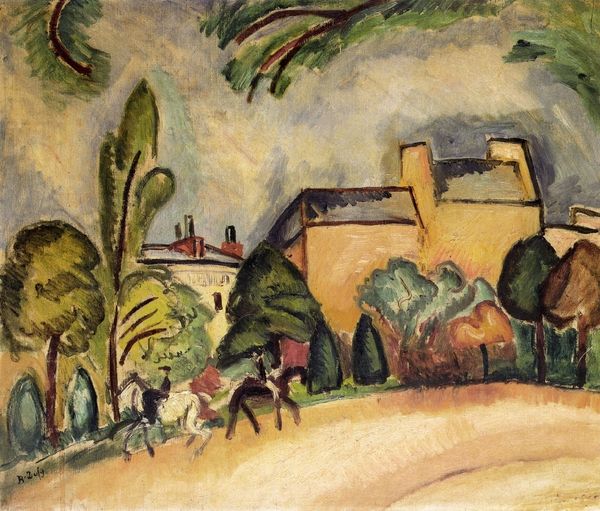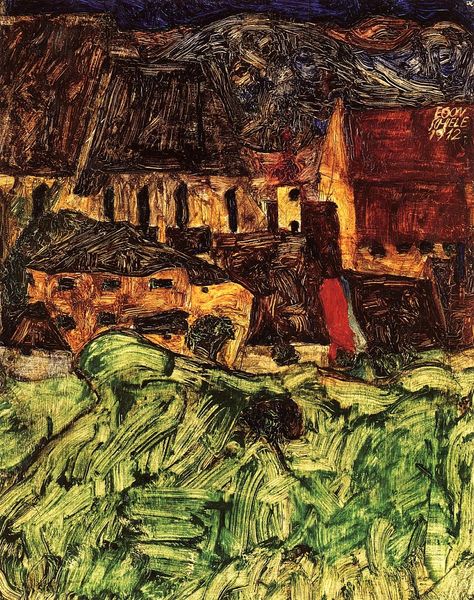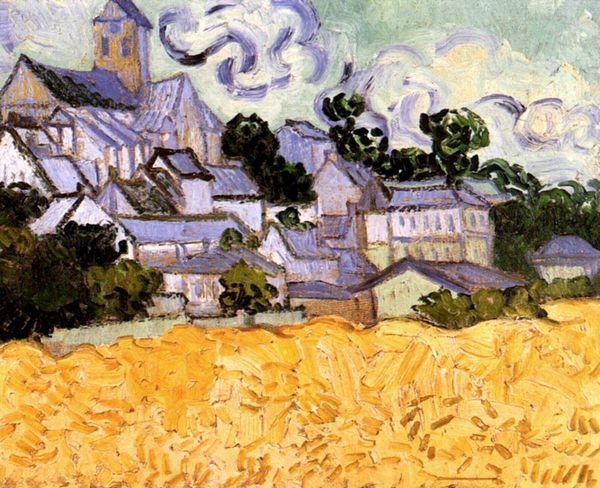
painting, oil-paint, impasto
#
narrative-art
#
painting
#
oil-paint
#
landscape
#
impasto
#
expressionism
#
cityscape
#
post-impressionism
Copyright: Public domain
Editor: Here we have Van Gogh’s "The House of Pere Pilon," created in 1890. It’s an oil painting with that signature impasto technique. The swirling brushstrokes and heavy textures give it an almost restless feel, even though it depicts a quiet cityscape. What can you tell me about how the painting was created and how that might affect what it means? Curator: Well, consider the sheer physicality of this piece. The thick layering of oil paint, applied with such visible energy, it isn't just representational. It's almost performative. Van Gogh’s technique elevated manual labor to an integral aspect of the artwork. We can trace it back to how class and commodity functioned. How would this context redefine a viewer’s interaction with landscape? Editor: So you're saying the visible brushstrokes, the "means of production," so to speak, become part of the message? Instead of seeing just a house, we're also seeing the process of its creation, and the labor involved? Curator: Exactly. The impasto wasn't merely stylistic; it underscored the artist's active involvement, his labor, making it more than a tranquil vista. And don't forget that the mass availability of oil paints allowed for this kind of intensive application, which changes how it positions art. What labor and what material opportunities did it mask? Editor: That's a fascinating perspective! I usually just think about the emotional expression. Curator: Think of how the commercialisation of paint – these tubes allowing him to create landscapes that weren't previously as possible. Before this industrial advance, what role did landscapes play and how did it get communicated? Also what is Van Gogh expressing, by being both the owner of this ability and the subject of painting? Editor: I hadn’t considered the social implications of his style before. Thanks for making me think about the bigger picture! Curator: My pleasure. Recognizing the work in art opens pathways into critical analysis of economic relationships which in turn, recontextualises value.
Comments
No comments
Be the first to comment and join the conversation on the ultimate creative platform.

